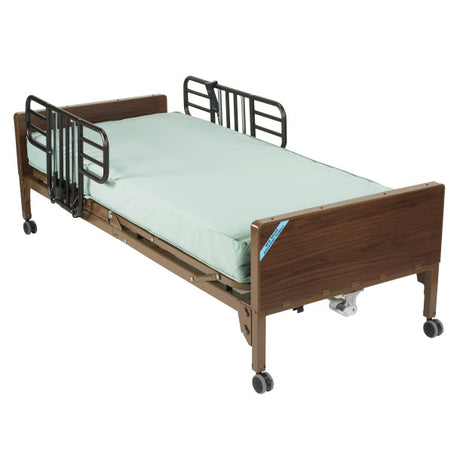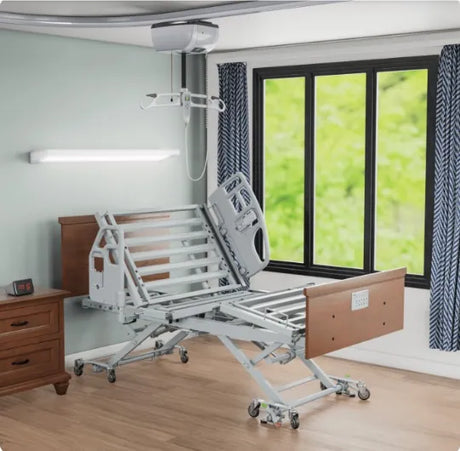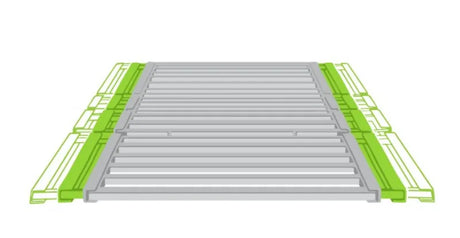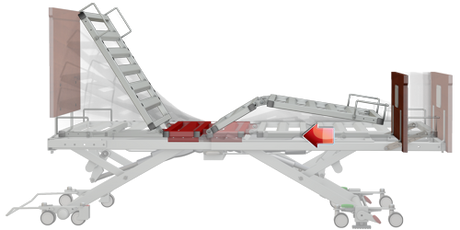Hospital bed rails are an essential safety feature in healthcare settings, providing patients with security and support during their stay. Whether for aging patients, those with mobility issues, or for individuals recovering from surgeries, bed rails offer comfort and protection against falls. In this article, we will discuss the steps to properly install hospital bed rails to ensure the safety and well-being of patients.
Step 1: Gather Necessary Tools and Equipment
Before beginning the installation process, it is important to gather all the necessary tools and equipment. This typically includes a set of bed rails, screws, bolts, a screwdriver or power drill, and any additional hardware provided with the bed rails. It is crucial to ensure that all parts are present and in good condition before proceeding with the installation.
Step 2: Positioning the Bed Rails
The next step is to determine the positioning of the bed rails on the hospital bed. It is important to refer to the manufacturer's instructions for specific guidance on where to place the rails. Generally, the bed rails should be positioned parallel to the headboard and footboard of the bed, with a few inches of space between the mattress and the rail to prevent entrapment.
Step 3: Attaching the Bed Rails
Once the positioning is determined, attach the bed rails to the bed frame using the provided hardware. Begin by placing the rail against the bed frame and aligning the pre-drilled holes on the rail with the corresponding holes on the bed frame. Insert the screws or bolts through the holes and tighten them securely using a screwdriver or power drill. It is important to ensure that the rails are firmly attached to the bed frame to prevent any movement or instability.
Step 4: Testing the Stability
After installing the bed rails, it is essential to test the stability and security of the rails. Apply pressure to the rails in different directions to ensure that they are securely attached to the bed frame and can withstand the weight of a patient leaning against them. If there is any wobbling or movement, tighten the screws or bolts further to reinforce the attachment.
Step 5: Adjusting the Height of the Bed Rails
Many hospital bed rails come with adjustable height settings to accommodate patients of varying sizes and needs. To adjust the height of the bed rails, locate the adjustment mechanism on the rail and follow the manufacturer's instructions for raising or lowering the rails. Ensure that the rails are set at the appropriate height to provide maximum support and security for the patient.
Step 6: Securing the Bed Rails
Once the bed rails are securely attached and adjusted to the desired height, it is important to secure them in place to prevent accidental dislodging or movement. Some bed rails come with locking mechanisms or safety pins that can be used to secure the rails in position. Follow the manufacturer's instructions for properly securing the bed rails to ensure the safety of the patient.
Conclusion
In conclusion, installing hospital bed rails is a crucial step in ensuring the safety and well-being of patients in healthcare settings. By following the proper steps and guidelines for installation, healthcare providers can provide patients with the security and support they need during their stay. It is important to regularly inspect the bed rails for any signs of damage or wear and tear and to make any necessary adjustments to maintain their effectiveness. Properly installed bed rails contribute to a safe and comfortable environment for patients, allowing them to rest and recover with peace of mind.
Faqs
Q: Where should I position the bed rails on the hospital bed?
A: Bed rails should be positioned securely and evenly along the sides of the bed, aligning them with the designated attachment points on the bed frame to ensure proper installation and functionality.
Q: What tools are needed to install hospital bed rails?
A: The tools needed for installing hospital bed rails may vary depending on the specific type of bed and rails, but commonly used tools include wrenches, screwdrivers, and possibly a rubber mallet for securing hardware.
Q: Are hospital bed rails adjustable?
A: Yes, many hospital bed rails are adjustable, allowing for customization to accommodate the patient's needs and preferences. They may be adjustable in height, length, or angle, depending on the model.
Q: Can hospital bed rails be installed on any type of bed?
A: Hospital bed rails are designed to be compatible with specific types of hospital beds and may not be suitable for use with other types of beds. It's important to ensure compatibility and proper installation for safety and effectiveness.
Q: Do hospital bed rails require maintenance?
A: Yes, hospital bed rails should be regularly inspected for signs of damage, wear, or loosening of hardware. Any issues should be addressed promptly, and the rails should be kept clean and properly maintained to ensure continued safety and effectiveness.







